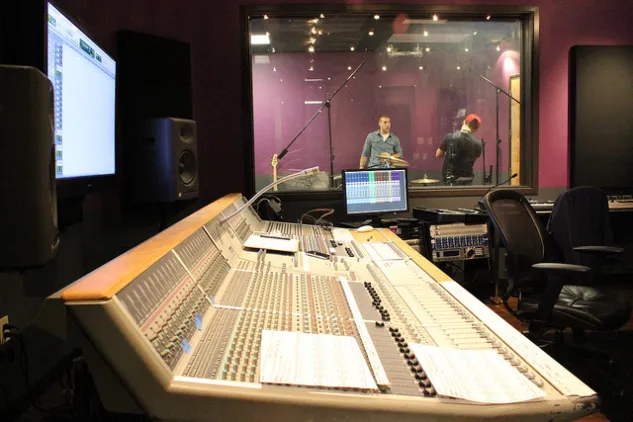Map Out Your Album's Sound Before You Ever Hit Record
Feb 05, 2014One lesson I’ve been slow to learn is that great recordings start in the mind before you ever set up a single microphone. To many artists this sounds obvious. How can you sit down to paint a picture of a mountain if you don’t already know what you want that mountain to look like. There are millions of ways to portray a mountain, so at some point the artist must commit to a vision of that mountain in his head before he pulls out a pen or paint brush.
In the same way, great recordings begin with a clear vision of how they will sound sonically. We can’t simply grab mics and start recording without any commitment to how we want those tracks to sound, specifically. Let’s flesh this out a bit more.

Via Pinnacle_College Flickr
Time To Put On Your Producer Hat
Having a home studio and being able to create music on your own is truly a gift. It’s freedom to create without any limits of time or money. However, one of the big challenges of home recording is having to wear multiple hats. I’ve referred to it as a battle before. And one of the most often overlooked hats is that of the producer.
If the artist writes and performs the songs, and the engineer captures and mixes the performance in the most sonically pleasing way possible, then it’s the producer who helps direct and vision cast the vibe and nuance of it all. It’s the producer who thinks through how each instrument should sound to best convey the artist’s intent and leave a creative mark on the music community.
In the home studio, to record your songs without giving thought to the producer’s hat is to miss the soul and the magic of what makes a great recording.
What Do Good Drums Sound Like?
Think of it this way. If we were to all get together in one big room and I posed the question, “What do good drums sound like?” to each of you, I’d get back thousands of wildly different answers. Why is that? If there were one sonically “correct” way to record drums then we would all do that. Recording sessions would have no need of a producer, but solely an engineer who could methodically capture that sound each and every time.
But that’s not the real world. We all give different answers because there are so many different (and great) drum sounds that work for different situations. Sometimes you want a dry, fat, intimate drum sound. Sometimes you want a massive room sound with energy and sizzle. In some cases you want tons of bottom end in your kick drum. Other times you want mostly beater cutting through. Sometimes you don’t really need massive kick or snare sounds, just crisp overheads with a touch of close mics will do the trick.
The list goes on and on. And therein lies the problem with jumping write from songwriting into recording. You’ll never get the right drum sound unless you’ve decided ahead of time what that “great” drum sound is to you for these songs.
What Will This Album Or EP Sound Like?
The drum example above is but a microcosm of what really must take place in your head before you start recording anything on your next album or EP. The best thing you could ever do for your recordings is to take a moment to clearly define your vision for how they will sound on this new project.
What are a few words that describe how you want it to sound when it’s completed? Polished? Raw? Fat? Clear? Gritty? Vibe? Edgy? Modern? Vintage? What albums do you want it to most closely resemble or pay homage to? What do you NOT want it to sound like?
Specifically apply all of these questions line by line to each instrument that you will be recording. What will the overall sound of the drums be like? Guitars? Bass? Keys? Vocals? What do you envision the mixes to sound like? Reverbs? Delays? Wide? Narrow?
Your Sonic Map To Success
The more you can commit to you in your head beforehand, the better. Write it down, and make that your map. This producer’s vision of the sonic landscape you intend for the album will help direct your every move in the recording sessions and help you know if you’re on track or not.
Without it, you are simply guessing and hoping that you have a generically “great” sound that you can do something with in the mix. Don’t let that happen on this next project. Take a few minutes to write out your sonic map to success and stick to it throughout the recording process. I’m confident you’ll be pleased with the results.
Discover The 6 Steps for Creating a
Radio-Ready Song from Scratch"
Enter Your Email Below To Receive The Free 17-page PDF,
"6 Steps To A Radio-Ready Song"
We hate SPAM. We will never sell your information, for any reason.

